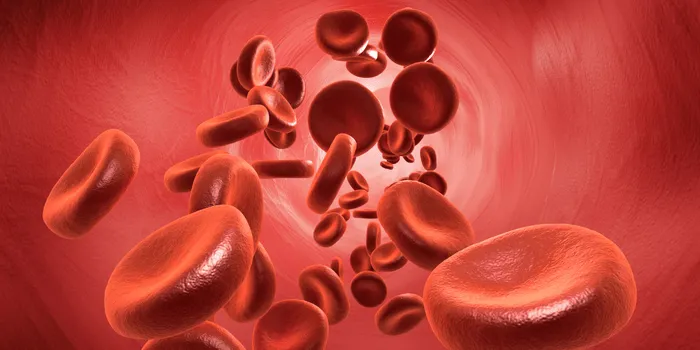If you have factor X deficiency, you’re one in a million. More precisely, you’re among the 1 or 2 people in every 1 million worldwide, or about 300 to 700 people in the U.S.
Having an ultra-rare bleeding disorder like factor X deficiency doesn’t define you. But it can lead to difficulties in getting a diagnosis, learning more about the disorder, and accessing treatment.
This guide to factor X deficiency can help you.
Understanding Factor X Deficiency: Causes and Symptoms
Factor X (spoken as factor 10) is one of the proteins that activates enzymes in the blood to help form clots. It’s also called Stuart-Prower factor after the first known cases of deficiency in the 1950s, in Rufus Stuart and Audrey Prower.
As with other bleeding disorders, when clotting factor X is defective, deficient, or missing, a person bleeds and bruises easily. Factor X deficiency is an autosomal recessive disorder, so it affects males and females equally.
To inherit factor X deficiency, a child must inherit a defective gene from each parent. Carriers, on the other hand, inherit one copy of the defective gene. To understand how you came to have factor X deficiency or the probability that your children will have it, you can look at genotypes:
- If one parent is affected and one is unaffected, each child will be a carrier, but none will be affected.
- If one parent is a carrier and one is unaffected, there’s a 50% chance a child will be a carrier, but none will be affected.
- If both parents are carriers, there’s a 25% chance a child will be affected, and a 50% chance a child will be a carrier.
- If one parent is affected and one is a carrier, there’s a 50% chance a child will be affected, and a 50% chance a child will be a carrier.
“It’s important to ask about and take advantage of genetic testing and counseling, as it can help identify where an ultra-rare bleeding disorder originated and whether other family members might also be at risk,” says Nikole Scappe-Hagen, manager of education at NBDF.
How to Get a Factor X Deficiency Diagnosis
Diagnosing factor X deficiency can be difficult because the disorder is so rare. Babies with severe factor X deficiency may bleed when the umbilical cord falls off; boys might have excessive bleeding during circumcision. Milder forms can be identified during routine screenings and reviews of family history.
A diagnosis is made through a coagulation test such as prothrombin time (PT), partial thromboplastin time (PTT), or activated partial thromboplastin time (aPTT). To confirm a diagnosis, health care providers can perform a factor X assay, or blood test, which is best done in a hemophilia treatment center (HTC), according to NBDF.
Severities of Factor X Deficiency
Knowing the severity of factor X deficiency — whether mild, moderate, or severe — helps you and your health care team determine how to best manage the condition.
Mild factor X deficiency is categorized by having 40% to 60% or more of the clotting factor in the blood. People with the mild form mostly don’t show symptoms, but they may have bleeding problems after trauma, surgery, or pregnancy and delivery.
Moderate factor X deficiency is categorized by having 10% to approximately 40% of the clotting factor. People have a low risk of severe bleeding. They may notice minor bleeding after trauma or surgery, or bleeding without knowing why. Bleeds include easy bruising, nose bleeds, and gum bleeds.
Severe factor X deficiency is categorized by having less than 10% of the clotting factor in the blood. People with severe deficiency will have a higher risk of severe bleeding, much like people with hemophilia. Symptoms include joint bleeds, bleeding in the brain, and bleeding into the stomach or intestines.
Treatments: From Fresh Frozen Plasma to Factor X Replacement Therapy
To receive comprehensive care for factor X deficiency, NBDF recommends that you visit an HTC, part of a nationwide network of centers established to diagnose and treat bleeding disorders. HTC providers will evaluate you and coordinate the best treatments for you.
Coagadex is the first factor replacement therapy for factor X approved by the Food and Drug Administration for routine prophylaxis (preventive care), on-demand treatment and control of bleeds, and management of bleeding before and after surgery.
If Coagadex isn’t available, another factor concentrate called Profilnine may be given. Profilnine is FDA-approved for factor IX complex and includes factor X concentrate.
Prior to factor concentrates, fresh frozen plasma (FFP) and prothrombin complex concentrate (PCC) were the only available treatments for factor X deficiency, and they are still used to increase factor X levels. Take care with PCC, however, as the factor amount varies from product to product and could potentially include too much factor, leading to clots, NBDF says.
If you have mild symptoms, topical therapies (such as nosebleed powders or fibrin glue) or antifibrinolytic agents (such as tranexamic acid pills) may bring relief without needing factor.
Hormone therapy may be used to treat heavy menstrual bleeding, and prophylactic treatment with factor X concentrate may help prevent complications during pregnancy. Up to 75% of women with factor X deficiency will experience heavy menstrual bleeding and heavy bleeding during childbirth.
Be sure to discuss treatment options for factor X deficiency with your doctor.

